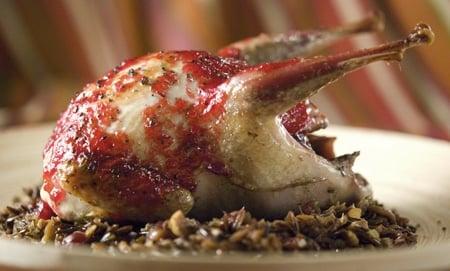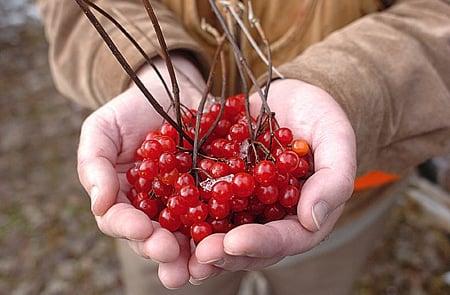
Photo by Holly A. Heyser
Have you ever thought that all the culinary wonders reside in California, where the charm of fresh, local, and seasonal cooking reigns supreme? Well, think again. While Alice Waters’ Chez Panisse dazzled palates in the Golden State, a restaurant named L’Etoile emerged in chilly Madison, Wisconsin, following a similar mantra of freshness, locality, and seasonality. This establishment, helmed by Odessa Piper, shocked taste buds with its exceptional fare, even from afar. Although Piper has since retired, L’Etoile continues to shine as a culinary giant in the Midwest.
Why do I mention this? Simply put, it takes a remarkable level of skill and innovation to embrace seasonal and local cuisine in a location like Madison, where winter temperatures can plummet to a bone-chilling -30°F. In contrast, in Berkeley, where the mercury rarely dips below freezing, such feats seem far easier.
With this skill and imagination, the Upper Midwest becomes a treasure trove of magical ingredients that are nearly unattainable for California locavores. Picture wild rice, hickory, butternut, walleye, yellow perch, and wild currants. As a hunter and forager myself, I can add some more treasures to the list, including woodcock and ruffed grouse.

Photo by Chris Niskanen
One of these treasures is the high bush cranberry, a member of the viburnum family. While not actual cranberries, they possess a similar taste and become softer and sweeter after a frost. Just take a look at the snow-dusted berries resting in my hands. Although tart, a touch of sugar balances their tanginess perfectly. In fact, they make an outstanding glaze for roasted grouse.
During my woodland walks, I also stumbled upon an abundance of mushrooms and noticed that the grouse we flushed had been feasting on hazel bushes’ catkins. My hunting companion, Chris, mentioned that these bushes typically bear tiny hazel nuts the size of your pinkie finger, although bears tend to get to them first, as evidenced by the abundance of bear droppings we encountered.
Mushrooms, hazel nuts, grouse — an intriguing trio that sparked my imagination. Inspired by the contents of the grouse’s crops (the sacs at the base of their throats storing their recent meals), which included viburnum berries, hazel catkins, clover, and strawberry leaves, I decided to create a Minnesota North Woods pilaf to accompany the roast grouse.
Let me clarify one thing: grouse are not to be treated like corn-eating pheasants. While I might serve pheasants with polenta, ruffed grouse demand a different approach. As woodland birds, they deserve to be celebrated in a manner that reflects their habitat. So, the pilaf I envisioned was meant to mimic the forest floor – both visually and in terms of flavor.
While plucking grouse can be challenging, I couldn’t bear to forgo the flavorful skin that not only enhances the taste but also protects the meat from drying out. Should you find yourself in possession of grouse and the courage to pluck them, follow my instructions for plucking pheasants. Remember, though, to dip the grouse for only 20 seconds at a time, not 30. Patience is key, and you will be rewarded with beautifully plucked grouse.
As for the woodland pilaf, it brought all the elements together. Wild rice, toasted hazelnuts, shallots, maitake mushrooms, cranberries, rosemary, and butter mingled for a good 50 minutes to form a cohesive and flavorful dish. Although not the most vibrant creation I’ve ever concocted, it authentically resembled the forest floor. And the taste? Earthy, dark, and inviting, the pilaf served as the perfect resting place for the grouse. The hazelnuts turned meaty, the crushed maitake mushrooms intertwined seamlessly with the wild rice, creating a texture and flavor that defy easy description (but imagine perfectly cooked al dente pasta). The subtle balsam notes from the rosemary and the tartness of the cranberries intertwined harmoniously with the roasted grouse. And to elevate the dish to true North Woods decadence, a hint of butter lent its richness.
Remember, no matter where you reside, flavors are all around you, beckoning to be united in delightful combinations. So, why not set off on your own culinary adventure and create something truly extraordinary?
Inspired by this article? Explore more fascinating recipes and culinary tales at Ekilove.



